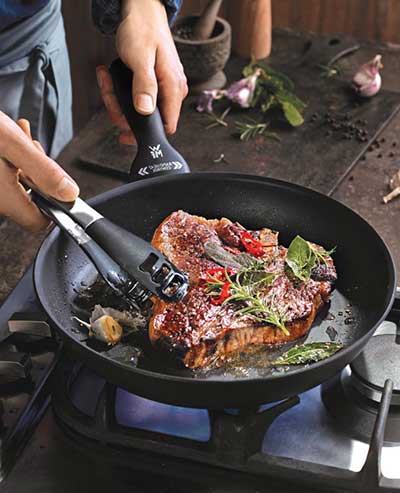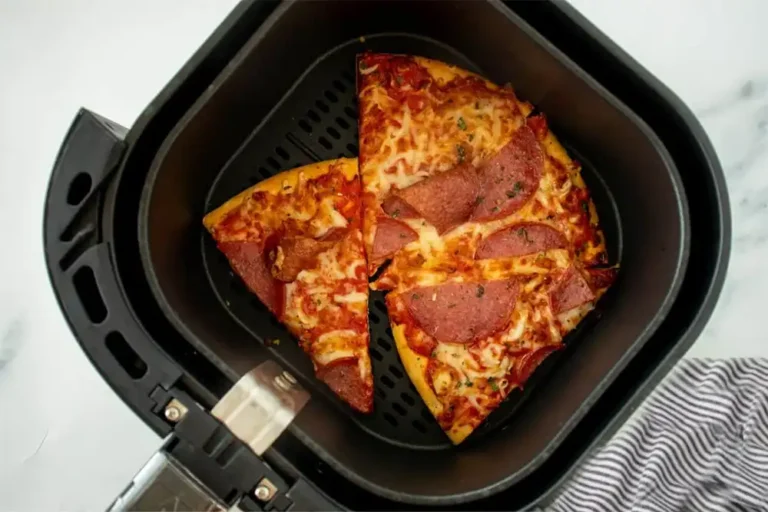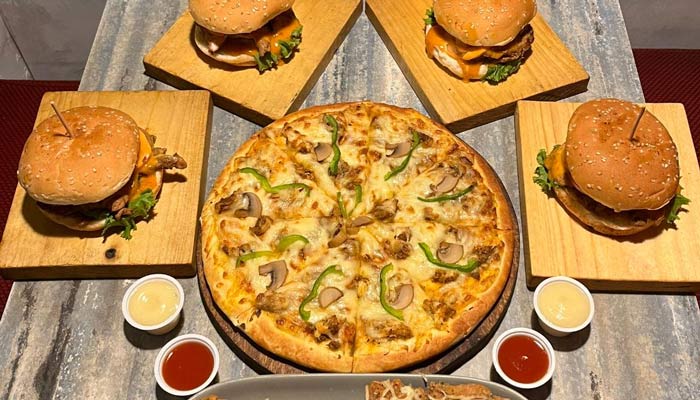Omelette Pan vs Fry Pan: Head to Head Compression
If you enjoy making breakfast, you probably have both an omelette pan and a frying pan in your kitchen. While they look similar, the variations between them mean that there will be cases where you’ll want to use one or the other in certain situations.
It’s crucial to understand those distinctions so you don’t make a mistake the next time you prepare an omelette or fry up some sausages or eggs for breakfast.
With this handy guide, you’ll learn everything you need to know about omelette pan vs fry pan.
What is Omelette Pan?
An omelette pan is a regular pan with a few additional functions. It features a low, flat bottom perfect for omelette preparation, as well as a lip around the edge to keep ingredients from slipping out. The long handle also keeps you safe while cooking.
In addition to making omelettes, they are great for scorching a chicken breast or sautéing delicate veggies.
Benefits of Omelette Pan
1. Non-stick Surface
An omelette pan is usually made of hard-anodized surfaces. As a result, the non-stick surface makes it easier for you to cook your eggs without getting stuck. It also makes it easier for you to clean up afterwards.
2. Long-Lasting and Rustic
The durability and reliability of omelette pans make them great for professional cooking. They’re also scratch-resistant and rustic, meaning you won’t have to worry about your pan rusting or breaking with frequent use.

3. High-Quality Heat Conduction
The high-quality aluminium alloy used in most omelette pans is specifically designed for even heat distribution, allowing you to cook more efficiently. In addition, they are thicker than a regular pan and won’t let you down under pressure.
4. Stovetops and Induction Cookers
An omelette pan is typically made out of hard-anodized aluminum, handling high temperatures. That makes it perfect for use on any stovetop or induction cooker.
5. Easy Cooking
Omelette Pans have thick bases, sloping sides, and a long handle. These features make it easy to cook with the pan. For example, the thick base provides even heat while the sloping sides make it easy to flip your foods while cooking.
In addition, the long handle makes it simple to get food in and out of your pan and provides ample space between you and hot surfaces.
Disadvantages of Omelette Pan
1. Small for Large Families
A four-egg omelette pan is perfect for making single servings in a small amount of time. However, if you have a big family or are hungry, one serving won’t cut.
What is Fry Pan?
A fry pan is a shallow, flat-bottomed cooking vessel used for frying and sauteing foods and is usually around nine to ten inches in diameter. It’s typically stainless steel or cast iron and has relatively low sides that flare outside with a long handle.
A common fry pan may be called a skillet or a frying pan.
Benefits of Fry Pan
1. High Cooking Speed
A fry pan heats up very quickly and has a relatively high cooking speed compared to other cookware. At home, you can save money on your utility bills by turning down your oven while using a frying pan instead.
2. Taste and Flavor
Frying pans are ideal for preparing eggs and other delicate food items. For example, eggs prepared have a creamy texture and tend not to stick to the sides of the pan as they would on traditional ones.
3. Even-Heat Distribution
An important aspect of a non-stick pan is that it evenly distributes heat, so you can cook with little fat while still keeping your food moist and flavorful.
4. Stovetops Compatible
One of its most important features is that it can fit various stovetops. As a result, it may be utilized in just about any culinary setting.
The average home is usually equipped with different ovens, and most dishes require different kinds of temperatures. However, a frying pan works well in any cooking area.

5. Easy to Clean and Maintain
A non-stick fry pan makes it easy to cook and clean, eliminating most effort. Wipe it down with a damp cloth or sponge, and you’re done.
If your pan becomes a little stained, you can use soapy water with a soft sponge. Don’t use harsh abrasives, though; that will scratch up your pan.
Disadvantages of Fry Pan
1. Shallow
One of the disadvantages to using a frying pan is that they are not deep enough for some recipes. It means that you have to transfer these meals into a different pot to cook properly.
2. Food May Burn Out
It might be difficult to tell whether food is done while cooking on high heat. As a result, your food may be overcooked.
Comparing Fry Pan vs Omelette Pan
If you’re looking to buy an omelette pan, it’s likely that you already have a frying pan. So, what are the advantages of choosing one over the other?
Size
The biggest difference between fry pans and omelette pans is their size. Omelette pans are designed to make small servings of food (i.e., an omelette). However, fry pans can hold 3-4 times as much food with 200 to 300 mm diameter.
Functionality
Omelette pans have slanted edges to make removing the eggs from the pan easier. Unfortunately, they are only suitable for one or two servings at a time. On the other hand, frying pans are much larger than their counterparts and are ideal for large families or parties.
Design
Unlike a frying pan, an omelette pan has two half circles that make flipping easier without breaking the foods.
Frequently Asked Questions
1. Is it necessary for me to use both pans?
It depends on your cooking style. Well, if you’re mainly frying or sautéing food, a frying pan is your best bet. On the other hand, if you’re most interested in making omelettes or serving fluffy, folded pancakes, an omelette pan will do you right.
2. Do both pans come with a lid?
While some frying pans come with a lid, most do not—meaning you’ll need to buy one separately. Most omelette pans, on the other hand, come with one.
3. Are both pans oven-safe?
It is okay to use both pans in a conventional oven, but you should always check the manufacturer’s recommendations first.
Final Words
The good news for people who cook a lot at home is that both an omelette and a fry pan can be great investments. The main difference between them comes down to preference and style, as most people tend to use one or another for various purposes.
What’s right for you depends on what you cook most often. A dedicated omelette pan will come in handy if you enjoy making omelette. On the other hand, if you have a large family or guests who need a significant amount of fried foods, then a frying pan is more practical.
That said, fry pan vs omelette pan has its strengths and weaknesses, and it’s up to you which one you choose to buy. You can’t go wrong with either option—they’re both good in their ways.







